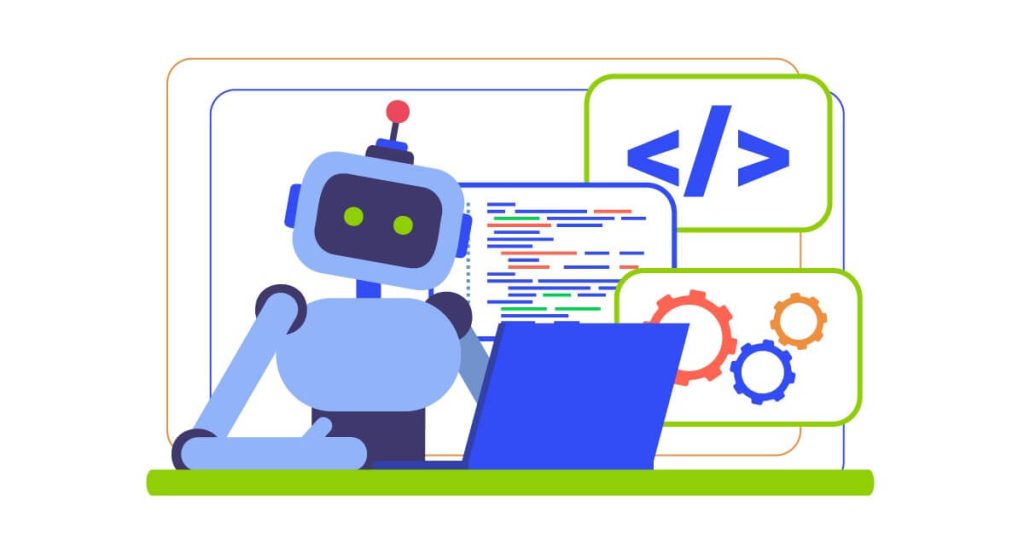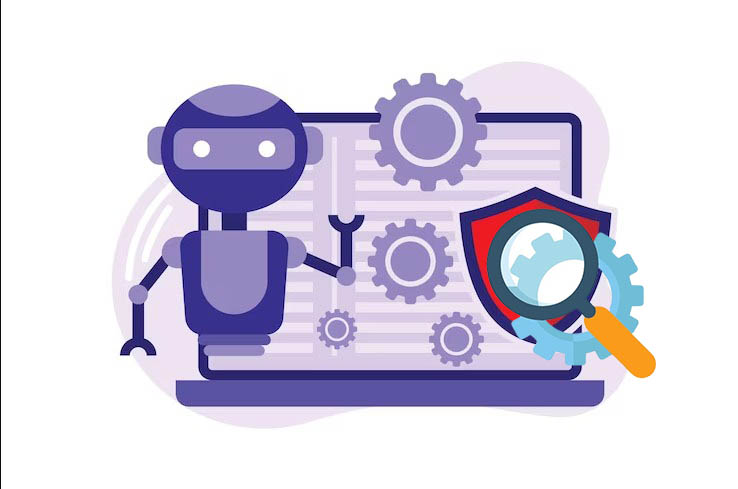High-quality software is designed, developed, and tested using an organized process called the software development life cycle (SDLC). The software development life cycle, or SDLC, is a technique that lays out every phase of the software development process. Creating software that is both high-quality and maintainable while satisfying user needs is the aim of the SDLC life cycle model. Software testing services provider must be tested after it has been developed to make sure it operates as intended. Nevertheless, not much testing is done during the SDLC. As a result, all potential problems are now being monitored, addressed, and retested. This guarantees that the product satisfies SRS quality standards.
Static Testing
Static testing is a type of analysis that works without program execution. It gets necessary information from the source code, documentation, and other project resources to look for defects. Static testing helps identify issues and defects earlier than you have to compile the techniques to executables. Common static testing methods include: Common static testing methods include:
Code Reviews:
Code support is where the engineer responsible for a piece of software code manually views the logic of the code, the structure of the code, code standards, and looks for errors in the code. Development takes place before big releases and the material goes through reviews.
Static Analysis:
Static analysis is a type of analysis whereby the tools run through the code barely executing it to check for any bugs or for security and quality issues. Search expressions identify everything from compile-time errors to violations of style-maintenance rules.
Documentation Reviews:
Technical writers and quality assurance specialists ensure documentation meets the quality requirements. This will help to catch technicalities and gaps where the readers lack some information.
Benefits of Static Testing
Below are some of the benefits of static testing:
Early detection of defects:
Static testing enables the early detection of defects by analyzing the documents and artifacts before the execution, hence, the issues can be detected and solved at an early stage thus, saving the time and effort later in the development process.
Cost-effective:
The cost of static testing is less than that of the dynamic testing methods. Static testing is the type of testing that is done before the dynamic testing. The defects found during static testing are much cheaper to find and fix for the organization than the defects found in the dynamic testing. It reduces the software development costs, testing, and overall organization.
Easy to find defects:
Static testing can uncover defects that dynamic testing will fail to detect easily.
Increase development productivity:
Static testing is the process of testing programmed code that does not change, consequently increasing the productivity of the development, through the quality of the products, and the understandable documentation, and the improved design.
Identifies coding errors:
Static testing is the method that allows to detect the coding errors and syntax problems that can be the reason for the dirty and unmaintainable code.
However static testing is less effective because only certain categories of problems are identified since codes are not run. There are issues where it is hard to detect such as system integration errors, memory leaks, or performance bottlenecks. Tools can also throw false positives confirming nonexistent bugs because they are not ran at real time.
Dynamic Testing
Dynamic testing is a dynamic type of testing in which code is executed to identify shortcomings of a real application. Testing is conducted on an object code of the developed software in the form of an executable file. Common dynamic methods are:
Unit Testing
Unit tests are done on individual pieces of code such as functions or classes where inputs are provided to determine if the outputs are as expected. Subsystems function independently in the early phase followed by integration with subsystems.
Integration Testing
Modules are formed by connecting various units together, and the interfaces of each unit are checked for their interference with other units. Complexity during system architecture also builds gradually through additions.
System Testing
System testing is carried out on the combination of all the parts and components in the complete system to check the functioning of the total product before it is launched. This shows how previous real-world problems such as scalability or reliability remain unnoticed earlier.
Examples:
Consider the case of logging into a web page where the user fills the ‘Username’ and the ‘Password’ fields. ” – Valid input: This means that if the system is provided with acceptable input (e. g. If it enters values like (“Guru99”) but displays an error when the values are invalid (for example “Guru99@123”) then it has dynamic behavior for input values.
The main goal of dynamic testing is to verify that the software product meets the business requirements by the product’s functionality.
- It deals with the actual execution of the software and the verification of the output with the intended result.
- The testing can be with black box testing or white box testing.
- It is somewhat difficult because one needs to have a deep knowledge of the system.
- It results in more realistic testing than the static testing.
Dynamic Testing Techniques
Dynamic testing is broadly classified into two types:
White box Testing
White box testing, also known as clear box testing, mainly deals with the internal mechanisms of the code. The developers will do the white box testing which means that they will test every single line of the program’s code. The testing situations in which the test cases are created from the source code and the inputs and outputs are already known are the ones that are called the black box testing.
Black box Testing
Black box testing is what is only concerned with the functionality of the Application Under Test (AUT). Through the testing, the testers are ignorant of the system’s inner code. They examine if the system is fulfilling the desired product according to the given specifications. The Black box testing is also called Functional testing services and Non-functional testing.
Benefits of Dynamic Testing
Dynamic code execution has some benefits and performance elements that are not present in static execution – system crashes, client-server communication problems, GUI issues rarely emerge statically. Dynamic tests are performed on varied conditions or paths the user can take. To perform such an analysis, the team goes through the application’s usage flows to identify issues the developers themselves may not have considered.
Reveals runtime errors
Dynamic testing is a way of unveiling runtime issues, performance problems, memory leaks, and other things that can only be seen during the execution.
Verified integration of modules
Dynamic testing is a tool that is used to check the integration of various components such as modules, databases, and APIs, thus, it makes sure that the system is functioning properly.
Accurate reliability assessment
Dynamic testing is the process that allows to give an exact quality and reliability evaluation of the software and so to make sure that the software is meeting the requirements and functions as it was supposed to. Thus, this assists in ascertaining that the software is working properly in various usage situations.
Limitations of Static and Dynamic Testing:
|
STATIC TESTING |
DYNAMIC TESTING |
|
Static testing may not always detect the problems that may occur during the runtime. Some errors are visible only when the software is in action.
|
Dynamic testing could not cover all the situations caused by the huge number of possible inputs and execution paths. |
|
Depends on the reviewer’s skills. The efficiency of static testing is decided by the abilities, the experience, and the knowledge of the reviewer.
|
It is a big challenge to find the exact location of the problem in a complex system and to debug it.
|
|
The static testing is a very lengthy process when you are involved in a huge and complicated project.
|
Dynamic testing can be a time-consuming activity for the complex systems and not-so-common big test static suites.
|
|
In the situation of testing the extraordinary or the not-so-common conditions, it becomes a hard task to do the testing.
|
Choosing Between Approaches
It would be beneficial if projects utilizing Software Testing would engage in both static and dynamic testing to its combined efficiency in uncovering different issue types. When deciding on which strategies to emphasize consider: When deciding on which strategies to emphasize consider:
Testing Strategy
Medical or financial systems need to be tested to the point of no return. Use static and dynamic testing techniques to reveal not so easily discovered flaws. Static analysis: A quick and easy way to harden security or compliance.
Staff Competence
Conducting testing based on the current staff competencies. It is more advisable to use unit testing if the developers have significant skills in creating automated tests. However, if a technical writer is not readily available, a project may rely on external code review.
Manpower
The labor needed to operate the plant and tooling. It is much more expensive to trigger scalability failures by performance test environments than to invest in static analysis tools. Code review also requires fewer resources during the initial implementation than implementing UI tests.
Stage
Continual Testing involves more dynamic testing as components are integrated as early unit testing already sufficiently exercises isolated code. Shift left in the documentation quality- The earlier and the better.
Staying dynamic throughout the quality-testing process and combining static methods, such as peer code review, with dynamic system testing in the middle of the process ensures that teams get the best quality. Considered against risk, resources, and a project timeline, the right checks give rise to releasing more robust applications capable of coping with actual requirements. Don’t over- and under-use testing mechanisms in your ecosystem.
Conclusion:
Based on the advantages and limitations listed below, you can easily overweight which testing to choose- static or dynamic. Whatever method you choose, be selective on which software testing techniques will best suit your projects and needs. Make your software products the best with more testing.



